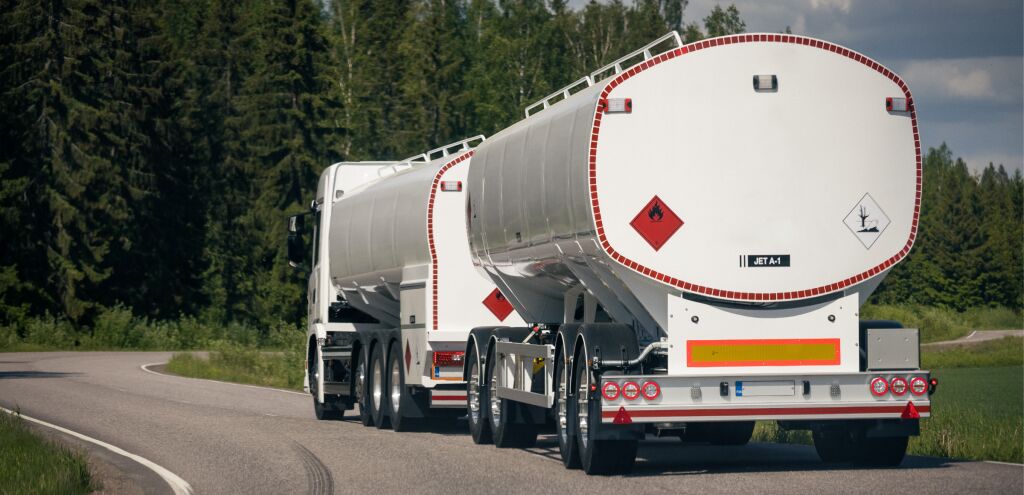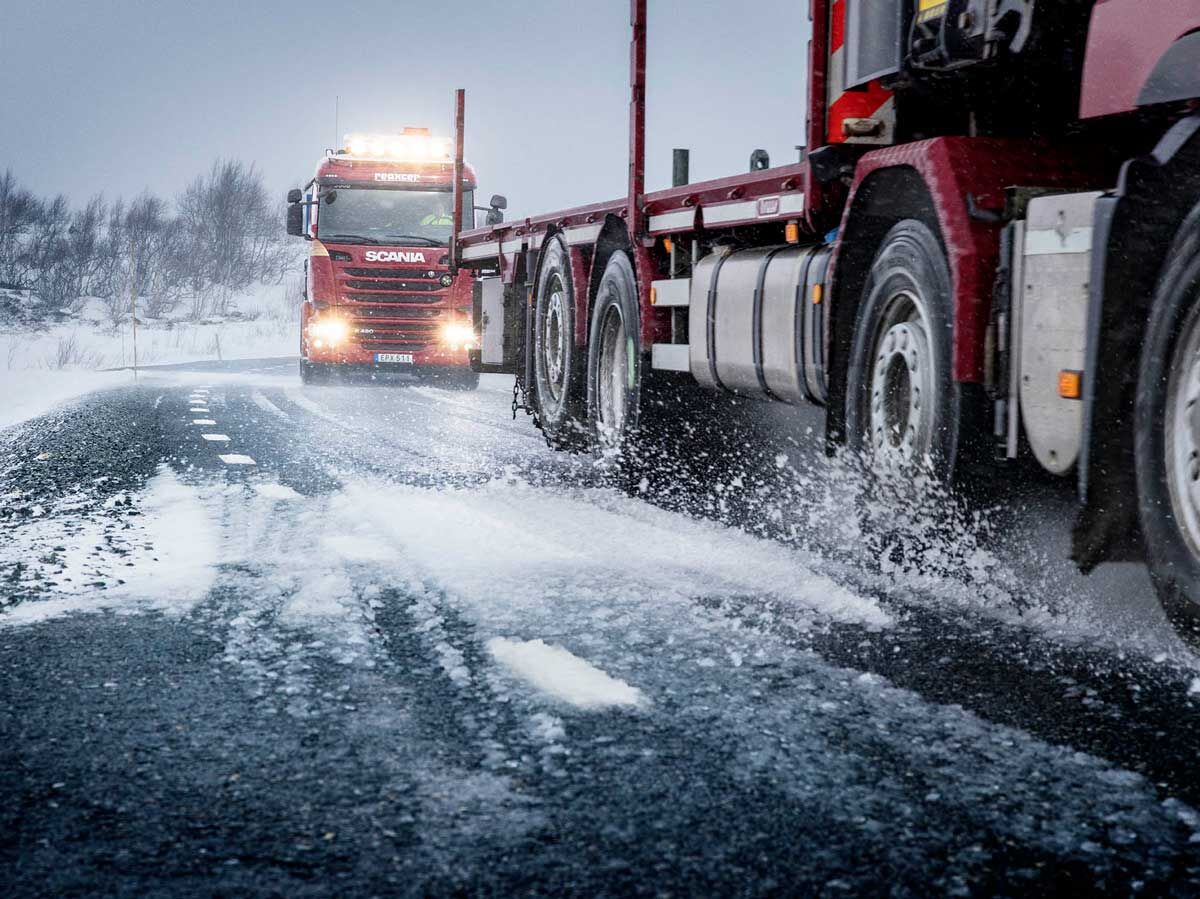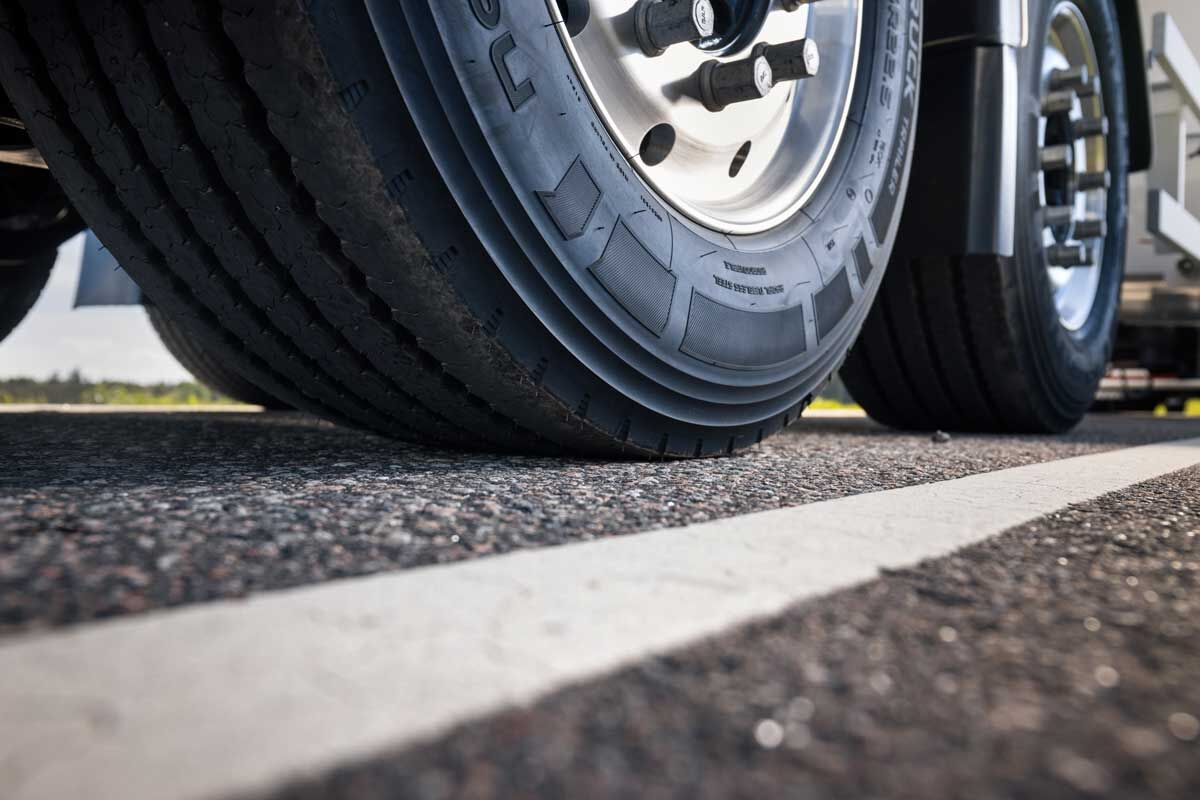
The markings in your heavy tire come in handy when finding suitable tires and matching them with your equipment and implements. One valuable piece of information indicated by tire markings is the speed rating, or the maximum speed the tire can maintain safely.
Knowing the maximum speed (indicated by the speed symbol) is essential, especially for commercial tires, as it impacts the safety, performance, and efficiency of different agricultural, trucking and earthmoving work, and more.
What are tire speed ratings?
A tire’s speed rating is a standardized measurement indicating the maximum speed for the tire in question. Exceeding this operating speed puts you at risk of tire damage, such as blowouts or sidewall ruptures, as well as premature or uneven wear. Instead of the actual operating speed being stamped on the tire sidewall, it is indicated by a speed rating. Each rating corresponds to a value in miles or kilometers per hour.
For example, the "D" speed rating means the tire handles a driving speed of up to 40 mph or 65 km/h. A lower speed rating, such as “A8”, on the other hand, corresponds to a maximum speed of 25 mph or 40 km/h. Adhering to these ratings and their corresponding operating speeds ensures the tire's structural integrity and performance.
Instead of learning all speed ratings and their corresponding driving speed by heart, you can check them using this tire speed rating chart.

Tire speed, load and inflation pressure
The maximum speed a tire can safely withstand goes hand in hand with the load capacity and inflation pressure. As the speed increases, the tire can carry less load using the same inflation pressure.
When you operate heavy machinery, such as a tractor, at a low speed, the tire requires lower inflation pressure. Meanwhile, higher-speed road transits require a higher tire pressure. Match the tire inflation pressure, operating speed and load to ensure a safe experience and prevent the tire from heating up or wearing out excessively.
Ensure safety and performance with the correct tire speed rating
The primary reason for adhering to your tire’s speed rating is to operate it safely while avoiding risks and damage. Exceeding the maximum speed leads the tire to overheat and can result in damage, endangering both the operator and equipment.
Using the appropriate operating speed, load and tire pressure ensures optimal traction, handling and stability, especially when used in changing conditions and terrains with varying speeds. Use the maximum inflation pressure indicated in the tire’s user manual to gain the highest speed value.
Nokian Heavy Tyres technical manual includes a chart for each heavy tire's speed, pressure and load-bearing capacity.
Always consult the information, guidelines and recommendations provided by the tire manufacturer to get the most out of your commercial tires and ensure safety in all operating conditions. You can find this information, including the tire speed rating, in the data sheet on each Nokian Heavy Tyres product page and the full technical manual.
Please remember that it is the driver’s responsibility to ensure their tires are safe and suitable for their vehicle and to follow the vehicle’s manufacturer´s guidelines for proper use and maintenance. Consult your closest Nokian Tyres dealer or your vehicle’s manufacturer for specific advice.


